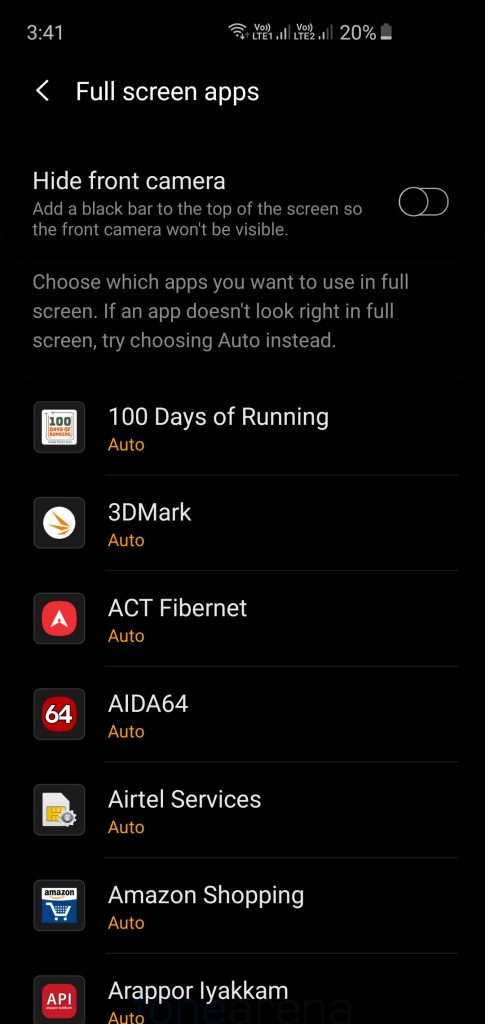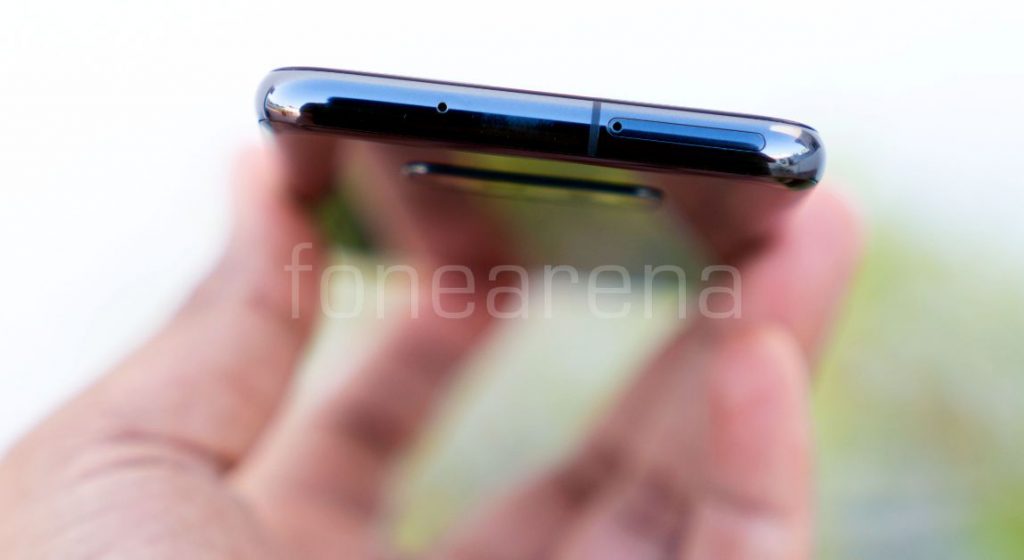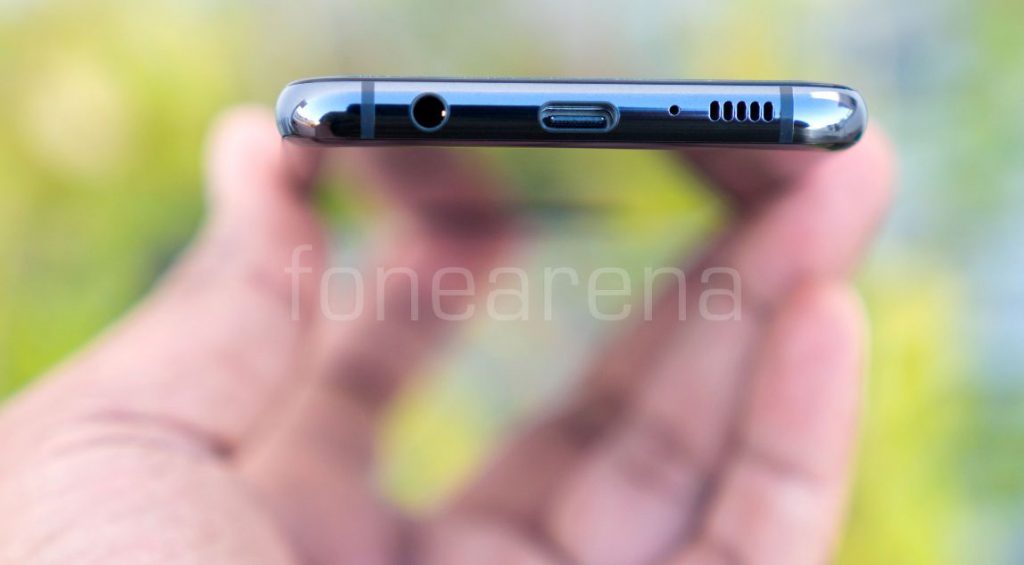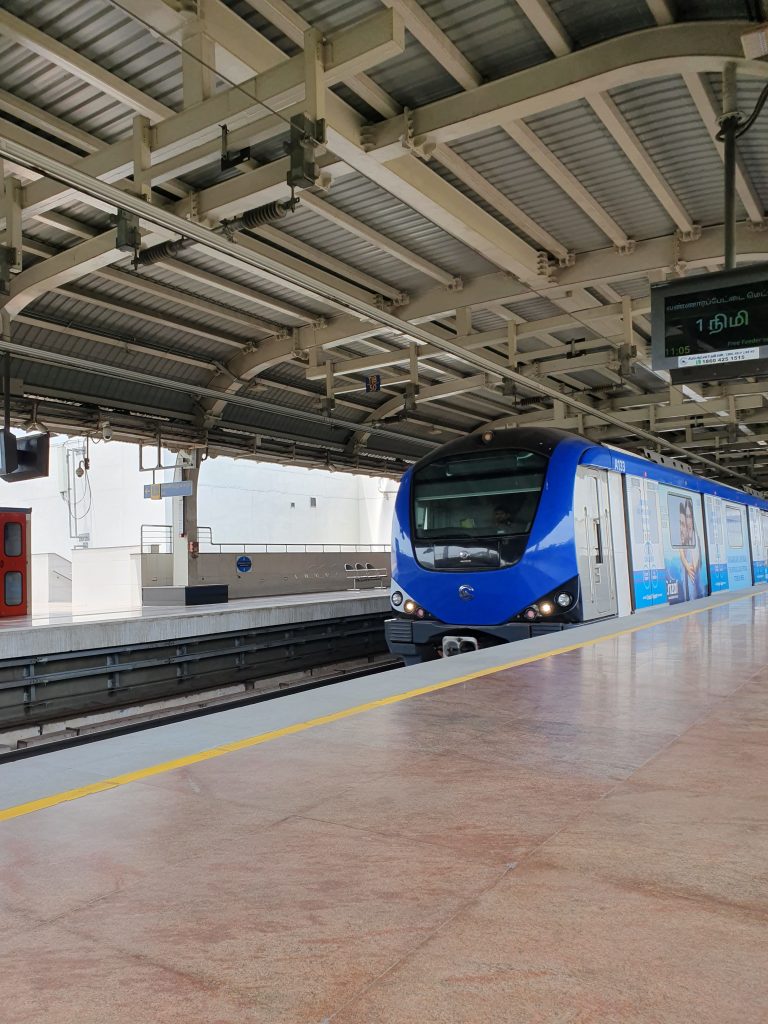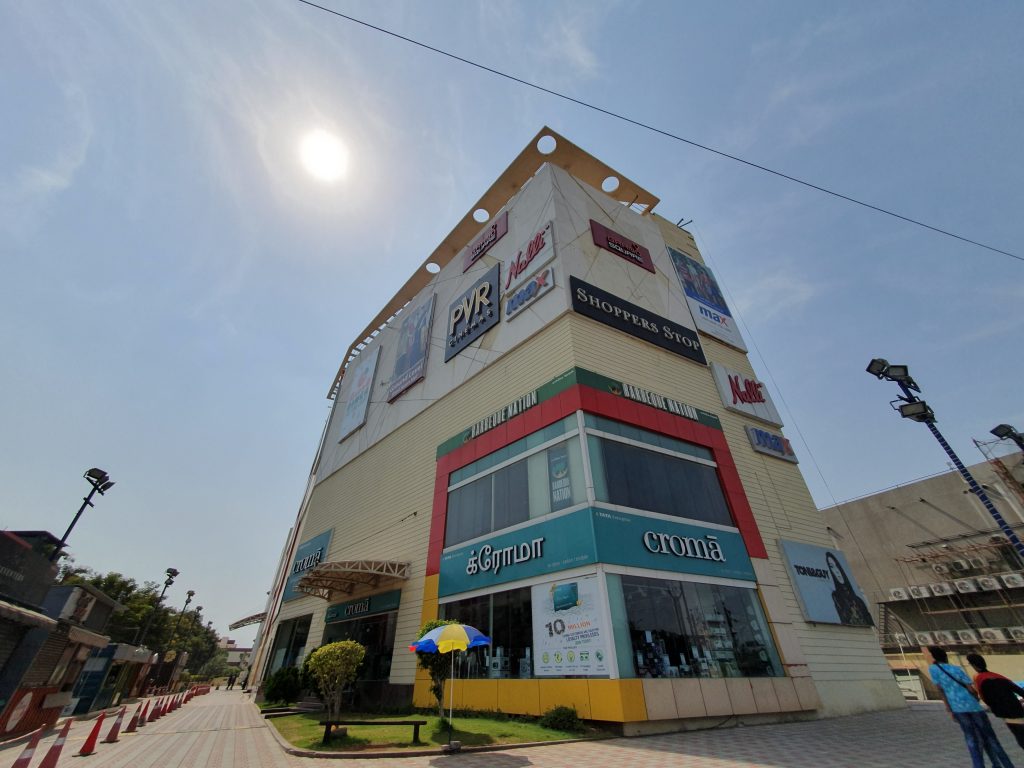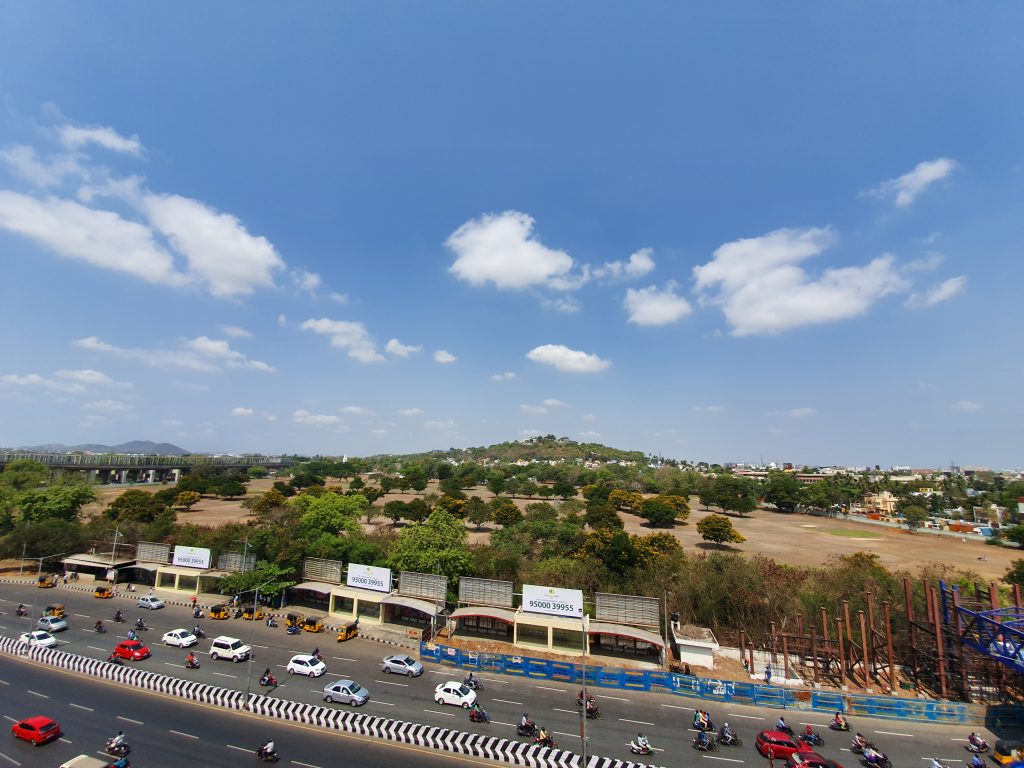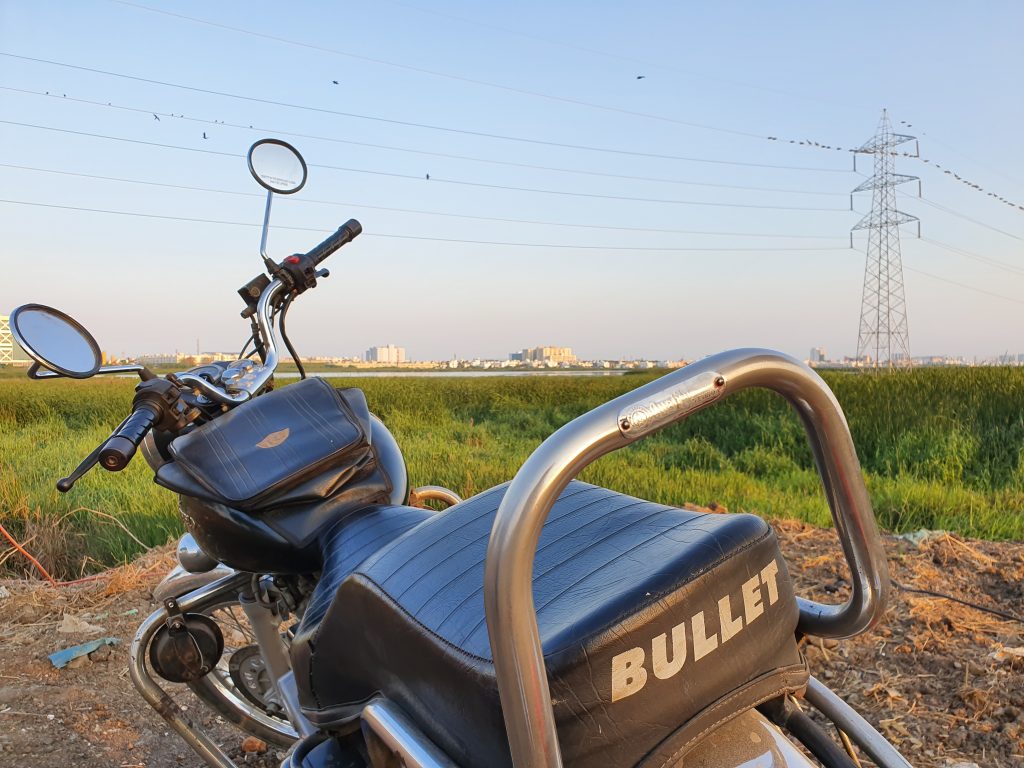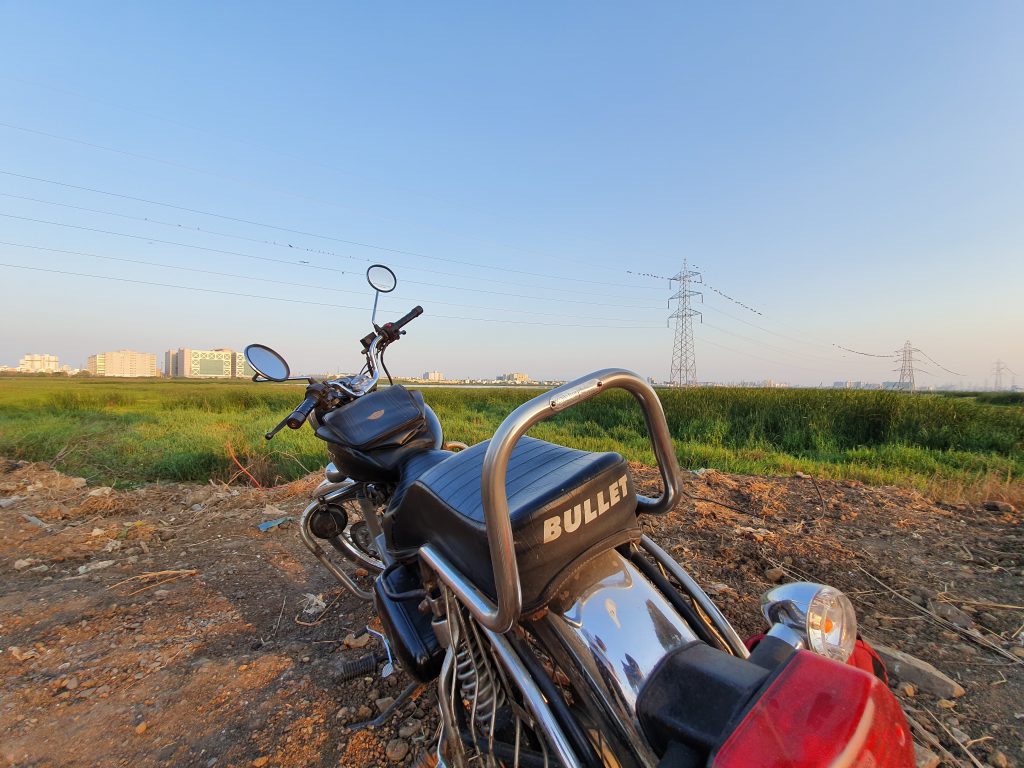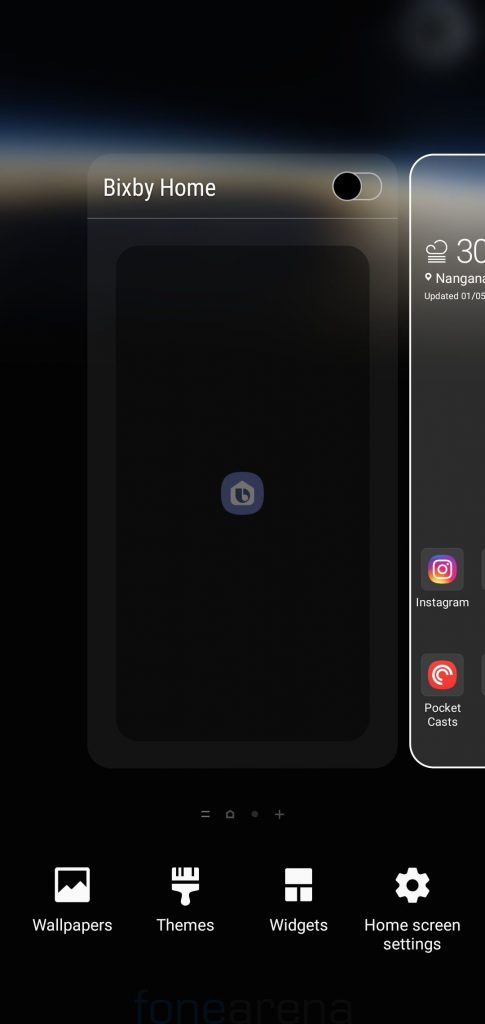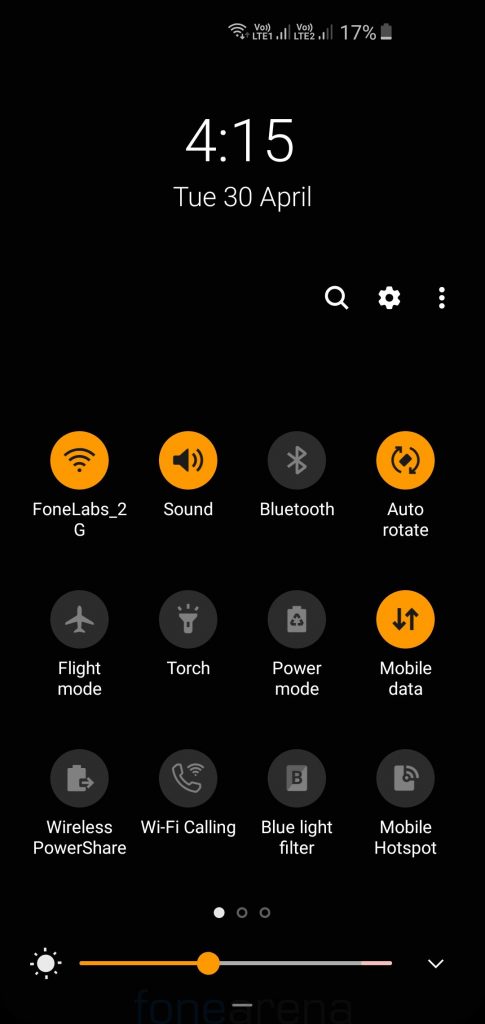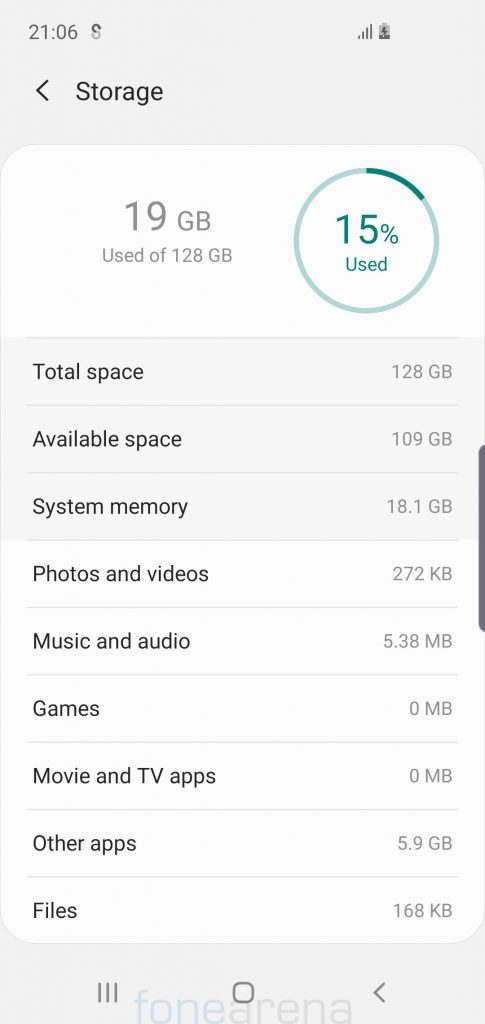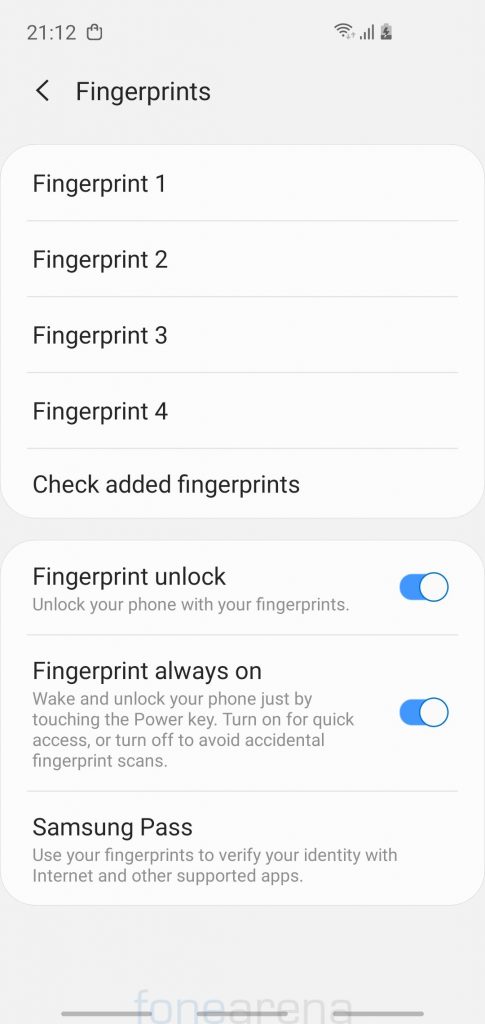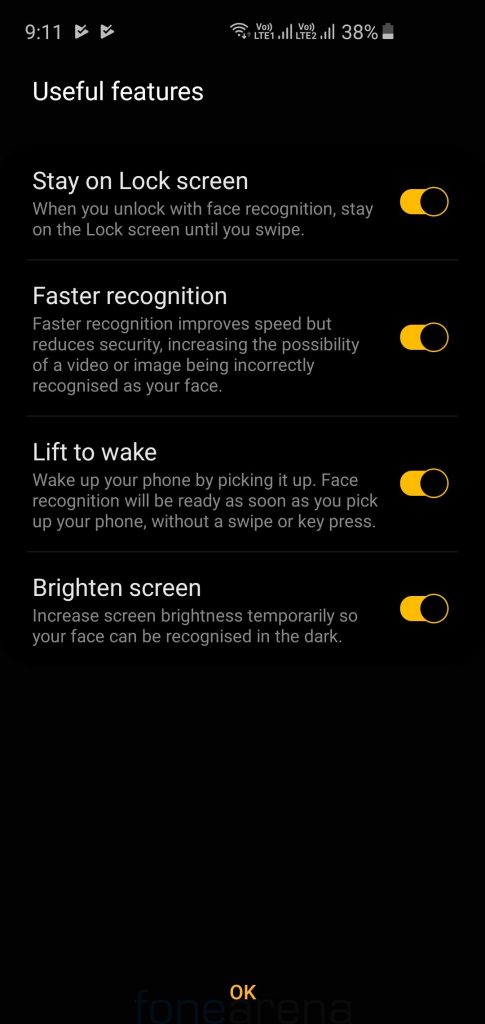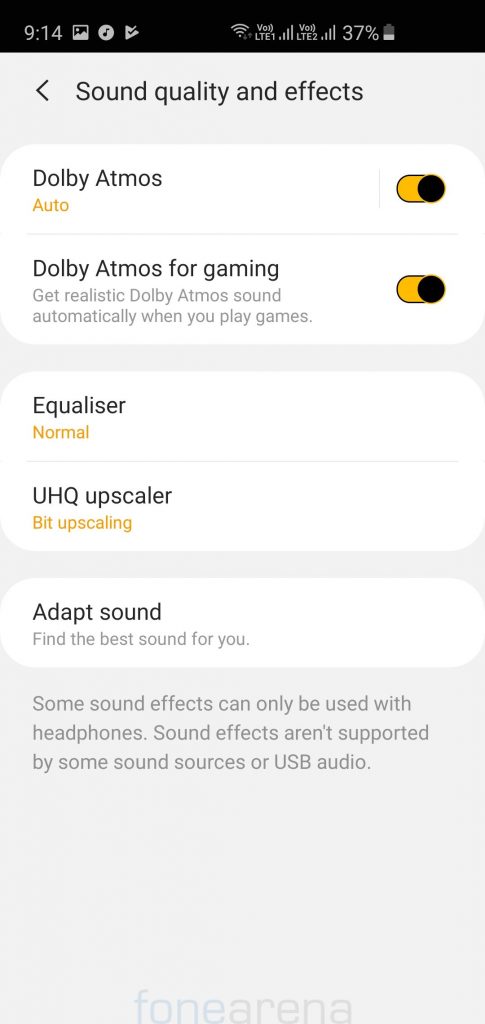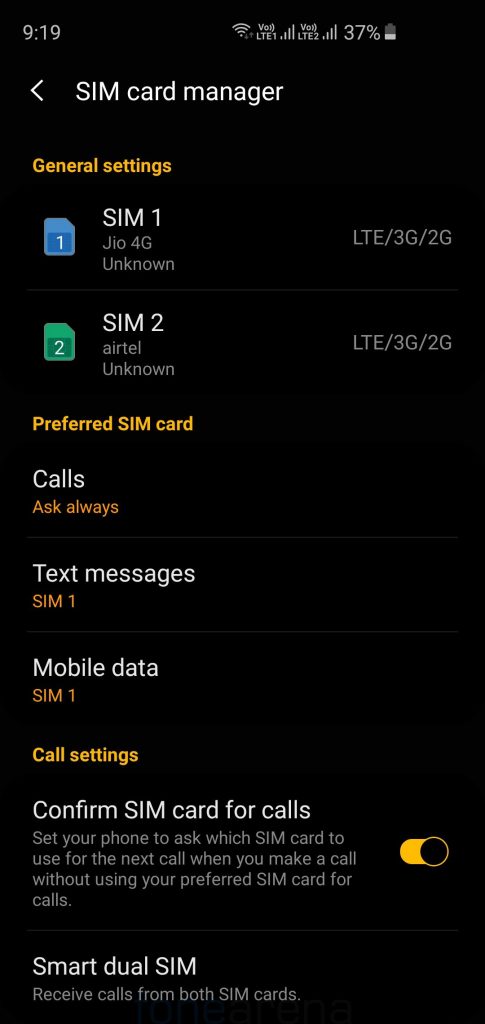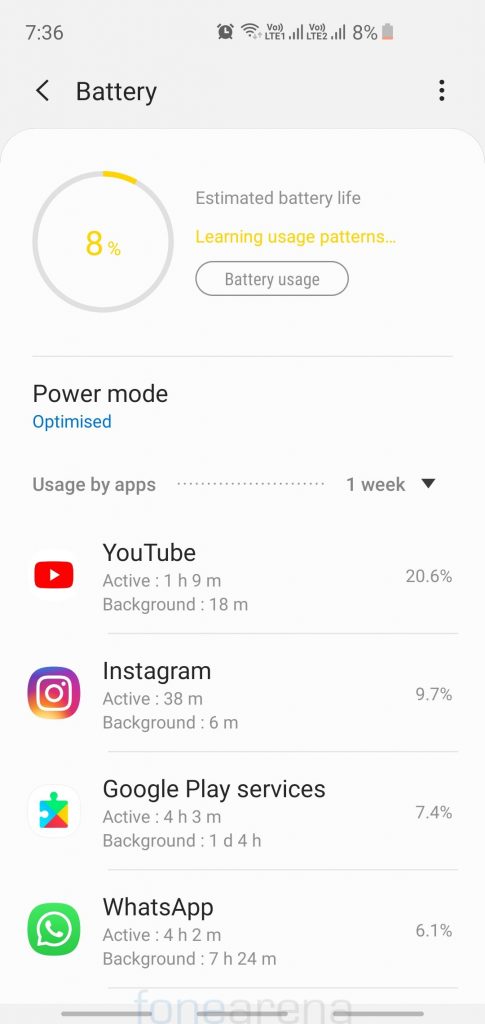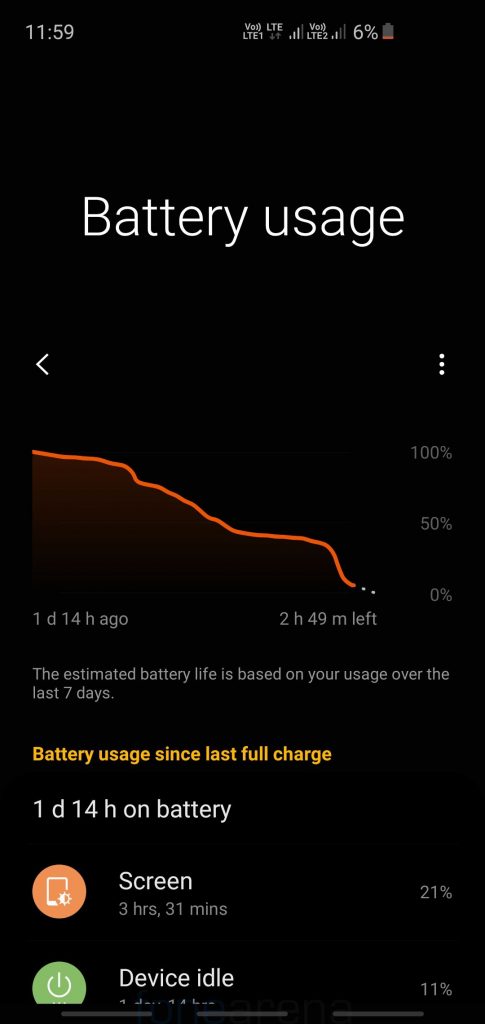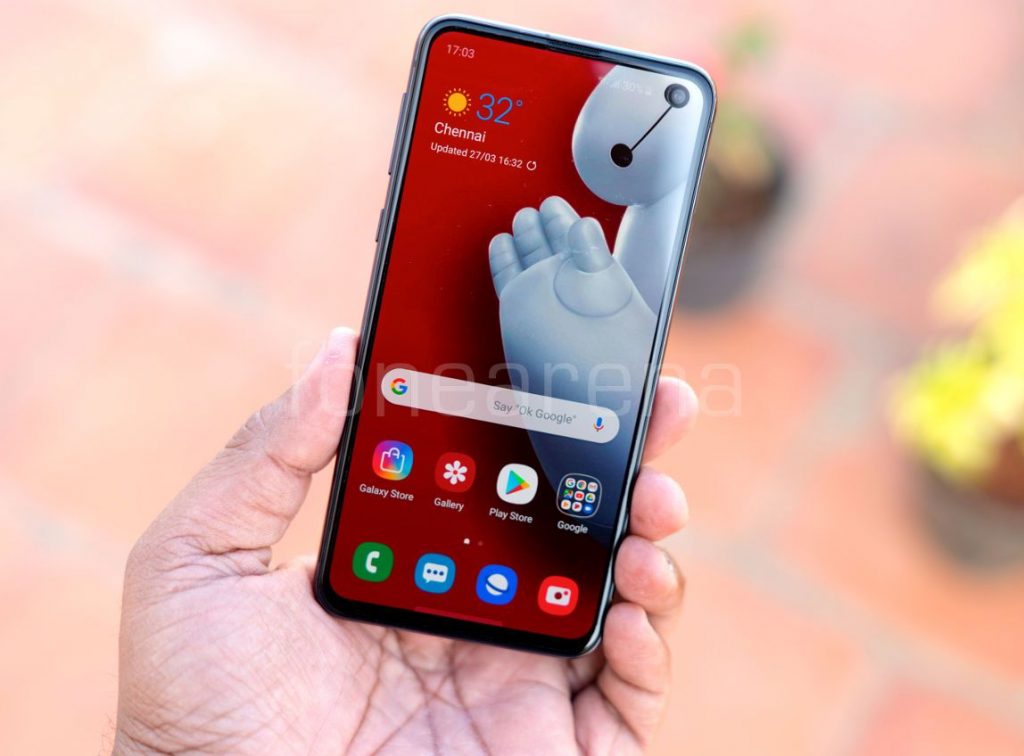
After launching three smartphones in the ‘S Series’ in 2015, Samsung has been launching only two ‘S Series’ flagships starting with the Galaxy S7 in 2016, but this year the company launched the Galaxy S10e along with the Galaxy S10 and the Galaxy S10+. Usually the cheaper version of the flagship phones have downgraded specifications. Even though the Galaxy S10e has a smaller FHD+ screen, capacitive fingerprint scanner and a smaller battery, it retains the powerful SoC, wireless charging along with Wireless PowerShare. Is this the best compact flagship smartphone? Let us dive into the review to find out.
Box Contents

- Samsung Galaxy S10e in Prism Black color
- Samsung charger with Adaptive Fast Charging (9V-1.67A/5V-2A)
- Protective case
- USB Type-C cable
- USB Type-C OTG connector
- In-ear earphones tuned by AKG
- SIM ejector tool
- Quick start guide and warranty information
Display, Hardware and Design
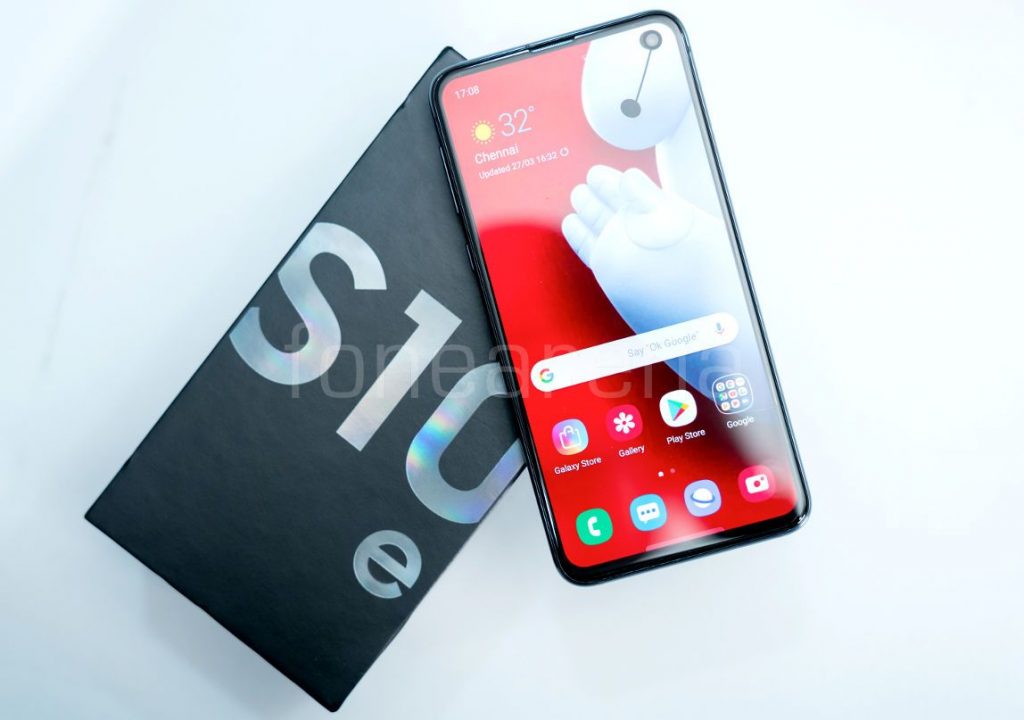
The Galaxy S10e comes with a 5.8-inch Full HD+ Dynamic AMOLED Infinity-O display with a resolution of 2280 × 1080 pixels at 438PPI, aspect ratio of 19:9 and a screen-to-body ratio of about 83%, thanks to minimal bezels. It has a flat screen instead of a curved screen on the S10 and the S10+ so it doesn’t have the edge rejection. Since the phone has AMOLED display, blacks are perfectly black, the screen is bright and the colors are vibrant. It is HDR10+ certified similar to other S10 models. The punch-hole display is not distracting when viewing videos on full-screen and I feel that it is better than the Infinity-U and Infinity-V displays since the hole is small.
Due to the aspect ratio content doesn’t extend to the sides of the phone when you are watching normal 16:9 videos, but you can pinch to fit, which crops some part to fit the video to the sides. You can also hide the front camera by adding a black bar to the top of the screen, but this is a waste of space.
Similar to the other phones, there is Blue light filter that is said to reduce eye strain by limiting the amount of blue light emitted by the screen. You can change font size and style and select apps that you want to use in the full screen aspect ratio, but there is no option to reduce the display resolution. There are two screen modes — Vivid and Natural along with color balance option to set the screen to cool and warm depending on your preference. You also get advanced color balance options to adjust the Red, Green and Blue colors. It also has Edge panel with Edge lighting for notifications and Always on display that shows up in the lockscreen when the phone is in standby.
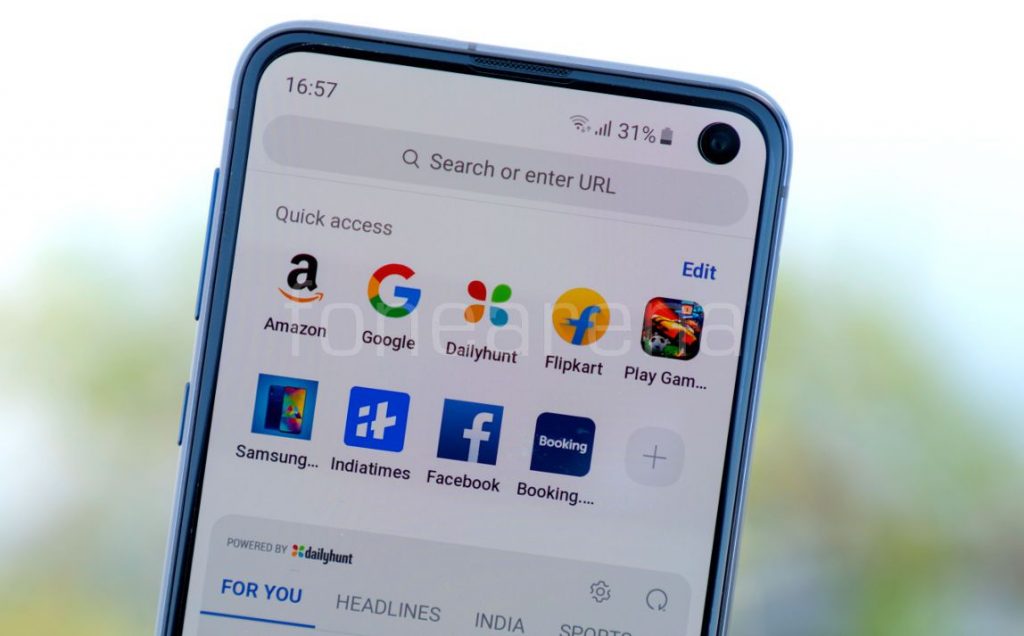
On the top there is an earpiece grill that also doubles up as a speaker and a 10-megapixel camera inside the notch. The phone also Hidden Light Sensor and Proximity Sensor as well as Barometer, Gyro Sensor, Geomagnetic Sensor and Hall Sensor. Samsung has removed the notification LED in favor of Always On Display and Edge lighting. There is a ring of light around the camera cutout that lights up when the camera is in use, but there are third-party apps that lets you use it for notifications. Samsung is said to be planning to bring this as a feature by default via software updates in the future.
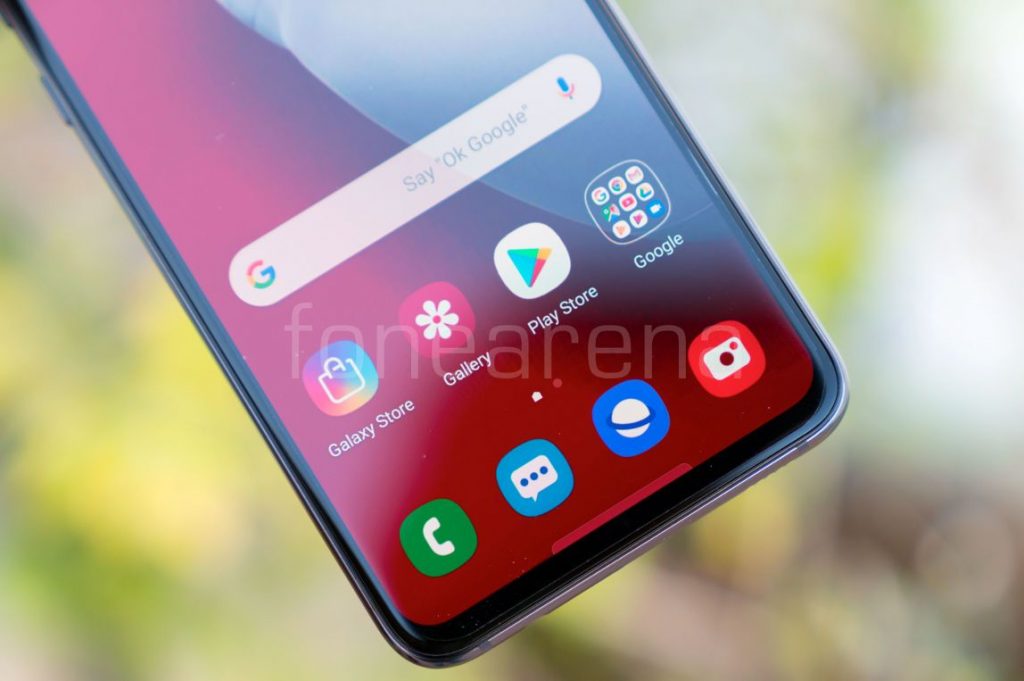
It has a tiny bezel below the display. Even though there are on-screen navigation buttons, you can enable gestures, which is better with Samsung’s One UI.
Regarding the button placements, the volume rockers and the Bixby button are present on the left side. The capacitive fingerprint scanner is on the right that also doubles up as the power button. On the top there is a secondary microphone and the Hybrid SIM slot. The 3.5mm audio jack, USB Type-C port, primary microphone and the speaker grill are crammed on the bottom. You can also view the antenna bands since this has a metal frame.
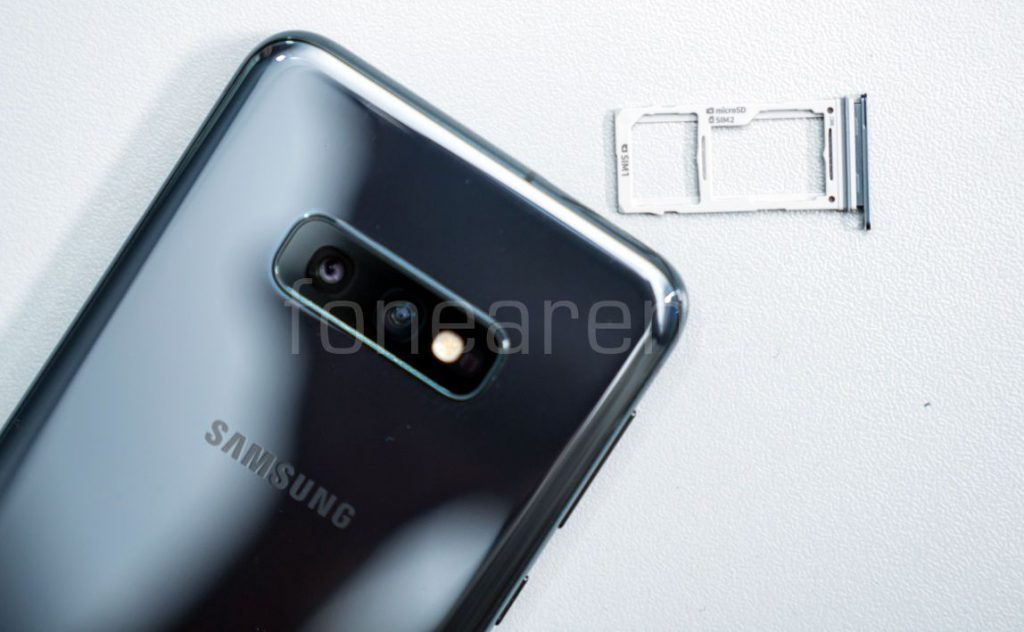
Samsung is still sticking to Hybrid Dual SIM slot. This takes two nano SIMs or a nano SIM and a microSD.
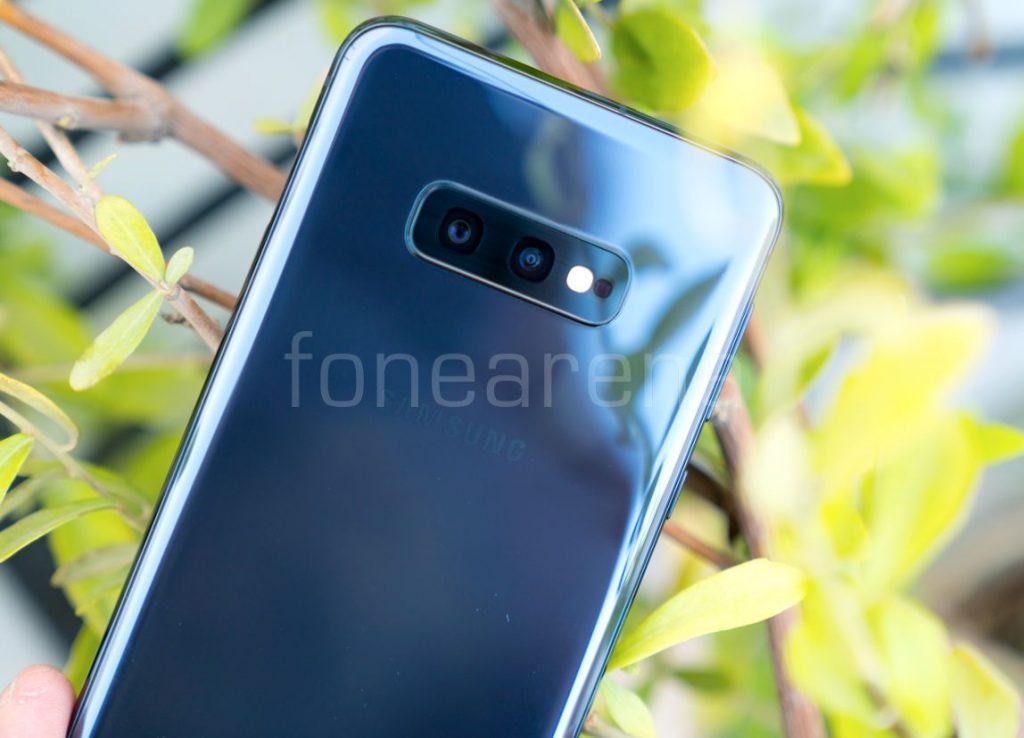
On the back, there are 12-megapixel primary camera along with a secondary 16-megapixel ultra-wide angle lens along with LED flash.
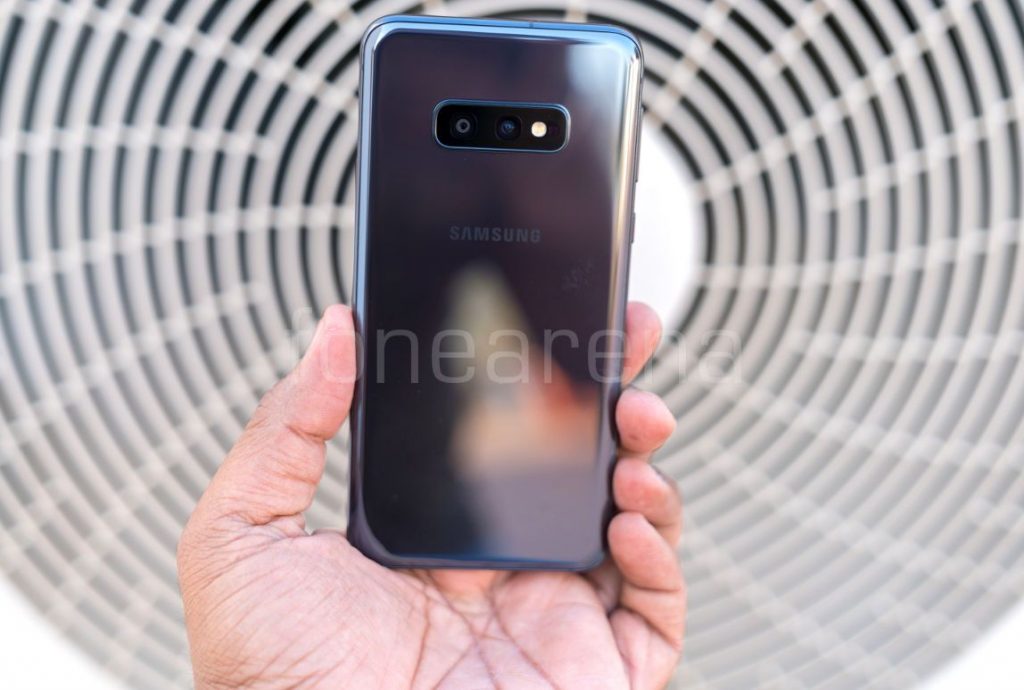
Similar to other S Series phones, this has a glass back, and it is also protected by Corning Gorilla Glass 5, compared to Corning Gorilla Glass 6 on the S10 and the S10+. We have the Prism Black which changes color to dark blue when light hits the phone at certain angles. It also comes with Prism White color in India.
Even though the phone has a 5.8-inch screen, it is compact to hold, making it one of the most compact phones. It measures 142.2x 69.9 x 7.9mm, making it one of the compact smartphones. It weighs 150 grams, lighter than the 157 gram S10. The phone has IP68 ratings for Water and dust resistance, but Samsung warns that you should not immerse the phone in water deeper than 5 feet or keep it submerged for more than 30 minutes.
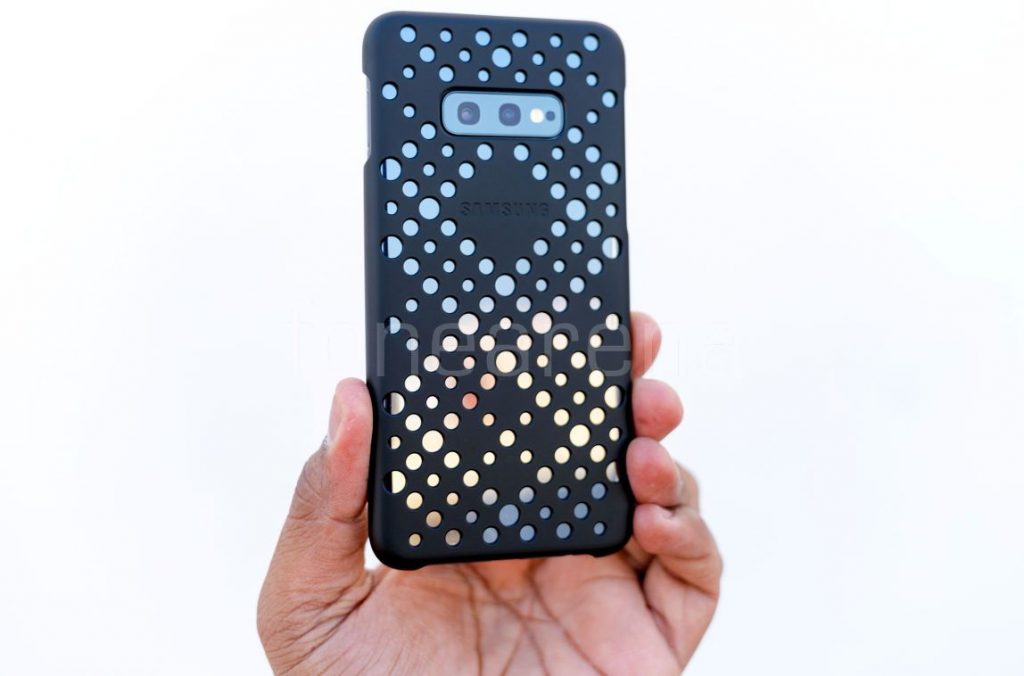
The glass back makes the phone slippery to hold, but you can use the bundled case that also protects the sides of the phone. Other official cases include – Silicone Cover at Rs. 1,599, Leather Cover at Rs. 3,199, LED Cover and Clear View Cover at Rs. 3,499 each and the LED View Cover at Rs. 4,099.
Camera
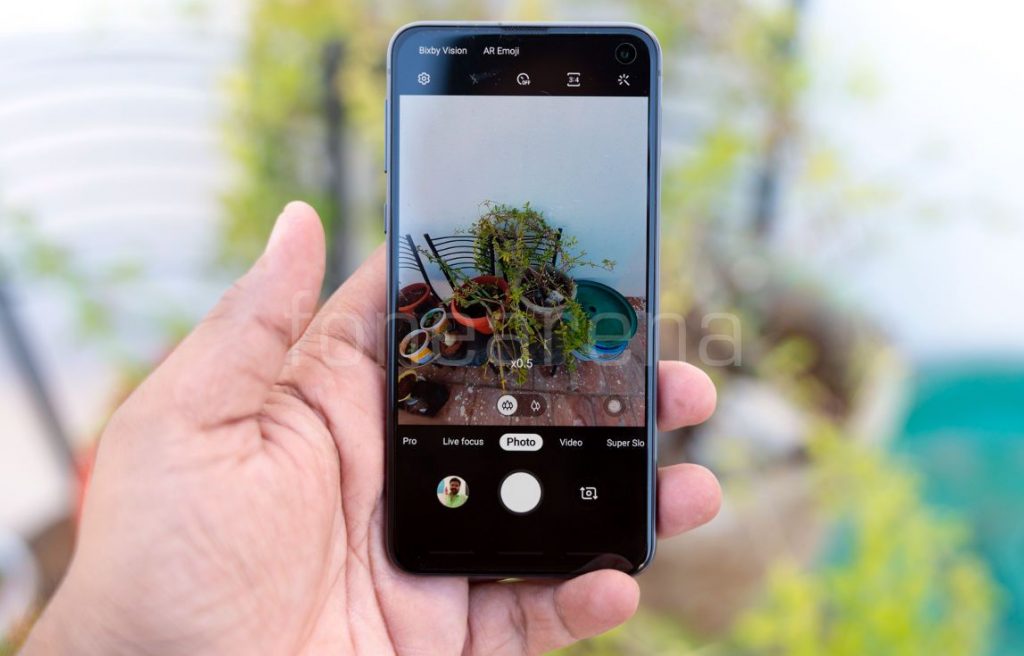
It has a new 12MP Dual Pixel F1.5/F2.4 variable aperture 77° wide-angle main SAK2L4 sensor with 1.4μm pixel size and OIS along with a 16-megapixel fixed-focus F2.2 aperture 123° ultra-wide S5K3P9 sensor with 1.0μm pixel size, but it loses out the Telephoto lens from the S10. On the front there is a 10MP Dual Pixel F1.9 aperture 80° S5K3J1 sensor with 1.22μm pixel size.
The Dual Aperture camera is designed to adapt to various lighting conditions, automatically letting in more light when it’s dark (f/1.5 mode) and less when it’s too bright it switches to f/2.4 mode. The lenses automatically adjust their apertures to reduce visual distortion and deliver the best possible picture, and help the camera provide better reception to light. You can manually switch to f/1.5 mode in pro mode, which is helpful in close-up shots but there is not much difference between the two modes in daylight.
The 16MP Ultra Wide Camera delivers a 123 degree field of vision. Since the lens is curved, sides of the images are automatically cropped and adjusted, but at some places like buildings, images look a bit weird, which is common. The 10MP front camera is better than the 8MP camera on earlier Samsung models such as S9 series and the Note9. Live focus is available for both the rear and front cameras, which uses software to blur the background. Other than normal background blur, there are Spin, Zoom and Color Point options.
The Scene Optimizer uses AI to recognize 30 popular subjects, and the local tone mapping automatically adjusts the camera settings to the scene to help capture the best shot available, and also includes Blink and blur detection. There is AR Emoji as well.
There are different modes such as Food, Panorama, Pro, Live focus with bokeh effect, Photo, Video, Super Slow-mo, Slow motion and Hyperlapse. The latest update also added Night mode.
Coming to the image quality, there is an improvement in the S10e compared to the Galaxy S9 series and the Note 9 in the normal mode. The camera captures a good amount of detail, creates really well exposed photos with good dynamic range and detailing, and dynamic range can further be improved using the HDR mode, which can be set to auto from the settings. The autofocus speeds are fast and accurate. Thanks to Dual Pixel technology, every single pixel enables precise and fast focusing. Low-light performance is decent, thanks to the variable aperture option that switches the aperture to F1.5, but there is still some noise. Night mode that captures images at multiple exposures and stacks them, so the shots are better. Selfies captured using the 10MP camera are clear and offers good details, and there is also 4K recording for the front camera.
Check out some camera samples (Click the image for the full resolution sample).
It can record videos at 4K (3840 x 2160 pixels) or 1080p (1920 x 1080 pixels) at up to 60 fps, and Slow Motion video recording in 1080p at 240 fps or 960 frames per second (fps) Super Slow-mo at 720p. There is HEVC (H.265) video mode and even HDR10+ option in beta for the rear camera. Video quality is good, and the audio is good as well, thanks to secondary microphone. Check out the video sample.
Software, UI and Apps
It runs Android 9.0 (Pie) based on the new Samsung One UI 1.1, which was introduced recently aimed at making the navigation much easier and designed around how we use our phones in the day-to-day. It was launched with March 2019 Android security patch, but it got the April security patch through OTA update recently.Search option in the
The new UI also brings improvements to Always On Display, reorganized settings menu to make settings easier to find, new Biby features and lots more. You can also remap the Bixby button finally.
Device care option lets you manage your device’s battery life, storage, RAM usage, and security all in one place. Apart from the usual set of utility apps and Google Apps, the smartphone comes with Facebook app and Microsoft Apps – Office Mobile, OneDrive and LinkedIn. The phone has Samsung Pay, which is Samsung’s own payment service. It works with Samsung’s patented Magnetic Secure Transmission (MST) technology as well as with Near Field Communication (NFC).
Out of 6GB (LPDDR4X) of RAM, you get 5.4GB of usable RAM, out of which about 2.2GB of RAM is free when the default apps running in the background. Out of 128GB (UFS 2.1) of internal storage, 109B of storage is free.
Fingerprint Sensor and Face unlock
Unlike the on-screen Ultrasonic Fingerprint sensor on the S10 and the S10+, the S10e has a side-mounted Capacitive Fingerprint sensor. This unlocks the phone immediately when you place the finger and also doubles up as a power button, so you get a clicky feel when you press it. You can add up to 4 fingerprints, and the fingerprint always on feature lets you wake and unlock the phone by touching the power key without pressing, which is convenient. Since the fingerprint sensor is present on the right side, unlocking the phone might be comfortable if you are a left-hand user.
Since Samsung has removed the top bezel on the S10 series in favor of punch-hole display, it has removed Iris recognition, so it comes only with the face recognition that uses the phone’s front camera to unlock the phone. Face recognition doesn’t work well if the lighting is poor in the room, if you are wearing glasses, hats, or use heavy makeup and is also less secure compared to fingerprint unlock.
Music Player and Media
Google Play Music is the default music player. It has equalizer, UHQ upscaler, Dolby Atmos technology (Dolby Digital, Dolby Digital Plus), Dolby Atmos for gaming that is automatically enabled when you play games and supports Ultra High Quality Audio Playback – UHQ 32-bit & DSD support PCM: Up to 32 bits, DSD: DSD64/128. All these improve the audio when listening through earphones. That said, audio through the bundled Samsung-made headphones tuned by AKG is good and the loudspeaker output from the stereo speaker tuned by AKG is good as well and is loud. It doesn’t have FM Radio, similar to earlier Samsung flagships.
Dual SIM and Connectivity
The connectivity options include, Wi-Fi 802.11 ac/ WiFi- 6 ax (2.4/5GHz),VHT80 MU-MIMO,1024QAM, Bluetooth v 5.0 (LE up to 2Mbps), GPS with GLONASS, NFC and USB 3.1 with support for USB OTG. It has 4G connectivity with support a lot of bands and also has Voice-over-LTE (VoLTE) support for Reliance Jio, Airtel and other operators. It has Dual 4G VoLTE that enables 4G VoLTE on both the SIMs. Call quality and earpiece quality is good, and we did not face any call drops. You can set preferred SIM for voice call, text and data from the SIM card manager. It has Smart Dual SIM feature, similar to other latest Samsung Dual SIM smartphones.
Performance and Benchmarks

The Indian version of the Galaxy S10e is powered by an Octa-Core Samsung Exynos 9 Series 9820 processor that has two of the company’s 4th generation custom designed Exynos M4 CPU cores clocked at up to 2.7GHz per core, two ARM Cortex-A75 cores clocked at up to 2.3GHz per core for optimal performance and four ARM A55 CPUs optimized for efficiency. It uses tri-cluster architecture for the first time. It has 6GB of LPDDR4x RAM and packs a Mali -G76 MP12, so the gaming performance is smooth without any frame drops and the RAM management is good as well to run several apps in the background and open them instantly. The performance is smooth, and the phone gets a bit hot on 4G usage and gaming since it lacks a vapor chamber like the S10+, but it doesn’t get too hot to handle. Check out some synthetic benchmark scores below.

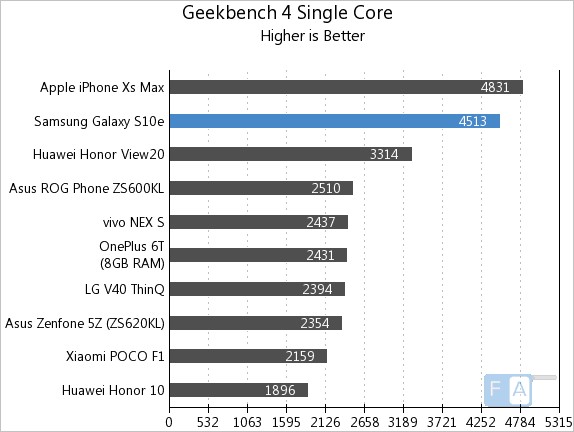
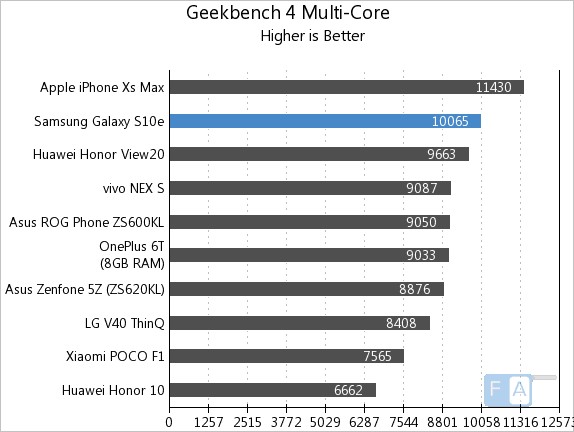

Battery life
Coming to battery life, the 3100mAh battery lasts for day with normal use and less than a day with normal use, which is not the best compared to other flagships in the price range. I got around 4 hours of screen on time in a day’s use. The Snapdragon model is said to offer slightly better battery life compared to Exynos version due to improved power efficiency of the SoC. You can improve the battery life a bit by using dark theme and enabling Adaptive power saving that sets the power mode automatically based on your usage patterns to save power when it’s not needed. You can also use medium and maximum power saving modes that restricts background data and limits CPU speed to further reduce power.
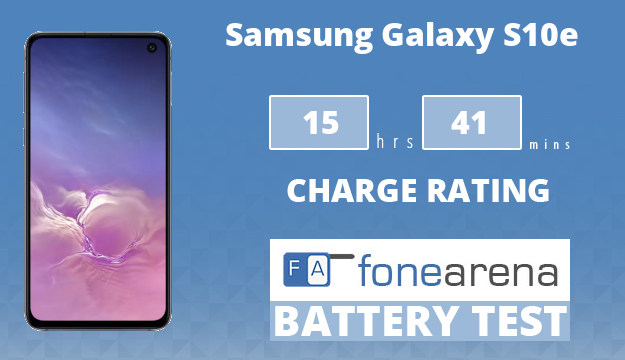
In our battery test the smartphone achieved a One Charge Rating of 15 hours and 41 minutes, which is just average, but with the 3100mAh battery you can’t expect much. Thanks to 15W adaptive fast charging, it can charge from 0 to 100% in 1 hour and 33 minutes and from 0 to 50% in just 33 minutes using the bundled charger. The phone also comes with Wireless PowerShare that lets you charge other Qi-certified devices by simply placing the device on top of your phone in the center.
Conclusion
At a price tag of Rs. 55,900, the Galaxy S10e is definitely the best compact flagship from Samsung that doesn’t cut corners with respect to specifications. With the latest offer you can get it for Rs. 46,990 after Rs. 5000 instant cashback and Rs. 4000 HDFC Cashback (bank offer extended till May 31st). It is powered by Samsung’s flagship Exynos SoC, has same main and wide-angle cameras as the S10, and the One UI is the best Samsung software yet offering smooth experience, however the company takes ages to push Android updates.
Competition
Except for the Pixel 3, we don’t have any other compact flagships in the Indian market, and even most mid-range phones have more than 6-inch displays. Google is planning to release the Pixel 3a next week, which is rumored to be priced in the similar range as the Galaxy S10e, but this might be powered by Snapdragon 670 SoC, even though it is said to retain the same camera as the Pixel 3.
Pros
- 5.8-inch Dynamic AMOLED screen with minimal bezels
- Comfortable one-handed usage
- Smooth performance
- Side-mounted fingerprint scanner is really fast
- Wireless charging and Wireless PowerShare
Cons
- Battery life could have been better
- Average low-light camera performance
Photography by Siraj

